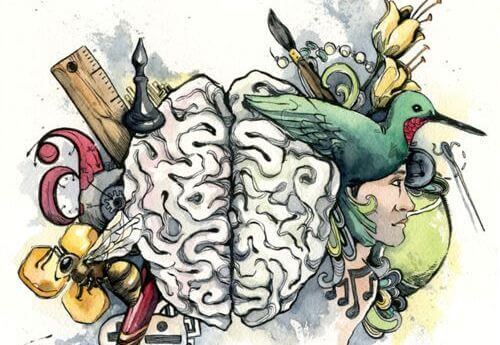Einstein and Chaplin, two people known for their intelligence, are said to have met once at a social gathering. They started talking and Einstein said to Chaplin, “What I have always admired about you is that your art is universal; everyone understands and admires him. ?
Chaplin, in a very spiritual way, replied, “What you do is much more worthy of respect; everyone admires and hardly understands. What happened there was that it was two people, each with a different kind of intelligence, because there weren’t just one, but several.
- The theory of multiple intelligences was developed by Howard Gardner.
- A professor at Harvard University.
- In 1983.
- This theory assumes that there is no single way to solve problems and develop valuable objects.
- But that there are many types that relate to each other.
Gardner and his Harvard University colleagues have shown that there are people who get good grades in college and have a good curriculum, but they don’t know how to communicate with others.
On the contrary, there are people who are not excellent students, but who have very good relationships with the people around them, which shows that one person is not smarter than the other, but that people develop different intelligences.
“The real sign of intelligence is not knowledge, but imagination. “Albert Einstein?
The research of Gardner and his team has developed the idea that there are up to eight different types of intelligence, each person has different degrees of each of the eight and combines them in a different way, this way of merging different intelligences is what makes us unique. The eight intelligences Gardner was talking about are:
It is the ability to use words effectively, using language structures, phonetics, semantics, etc. People such as politicians, poets, writers and journalists tend to develop such oral skills both verbally and in writing.
It relates to the ability to use logical reasoning and the resolution of mathematical problems, the speed at which this type of problem is solved is the indicator that determines the amount of logical-mathematical intelligence of a person, scientists, engineers, mathematicians and economists tend to excel in this type of ability.
It is the ability to build mental images, to draw and detect details, accompanied by a particular sense of aesthetics, this type of skill can be found in painters, photographers, designers, publicists, architects, creatives, etc.
It relates to musical skills, such as rhythm and melody, used to create new sounds, express emotions and feelings through music, in this field musicians, singers, composers, conductors, dancers, etc. are distinguished.
It refers to everything related to movement, both body and object, and reflexes, is used in activities that require coordination and a controlled rhythm, stands out among dancers, surgeons, craftsmen, athletes, etc.
“Creativity requires the courage to let go of certainties. “Erich Fromm-
It refers to self-knowledge itself, processes related to self-confidence and motivation, serves to understand what we do and value our actions, it can be very developed among theologians, philosophers and psychologists.
It’s the ability to connect with other people. This includes the ability to use gestures, control the voice and use facial expressions, is present among actors, politicians, teachers, etc. It is very useful for people who work with large groups because they will be able to detect and understand the problems. others and learn how to manage the group.
Ability to distinguish, classify and use elements of the environment, objects, animals or plants. People who have this kind of intelligence have a great ability to observe, experiment and draw conclusions. Environmentalists and botanists work with this intelligence.
“Rhythm is the most important thing because it’s magical, it’s what invites the audience to dance, and what I want are readers dancing with my words. -Haruki Murakami-
Gardner argues that all people have eight intelligences, but some of them still stand out from each other, it is necessary to learn to master much of these eight intelligences to face life, whatever our profession.

